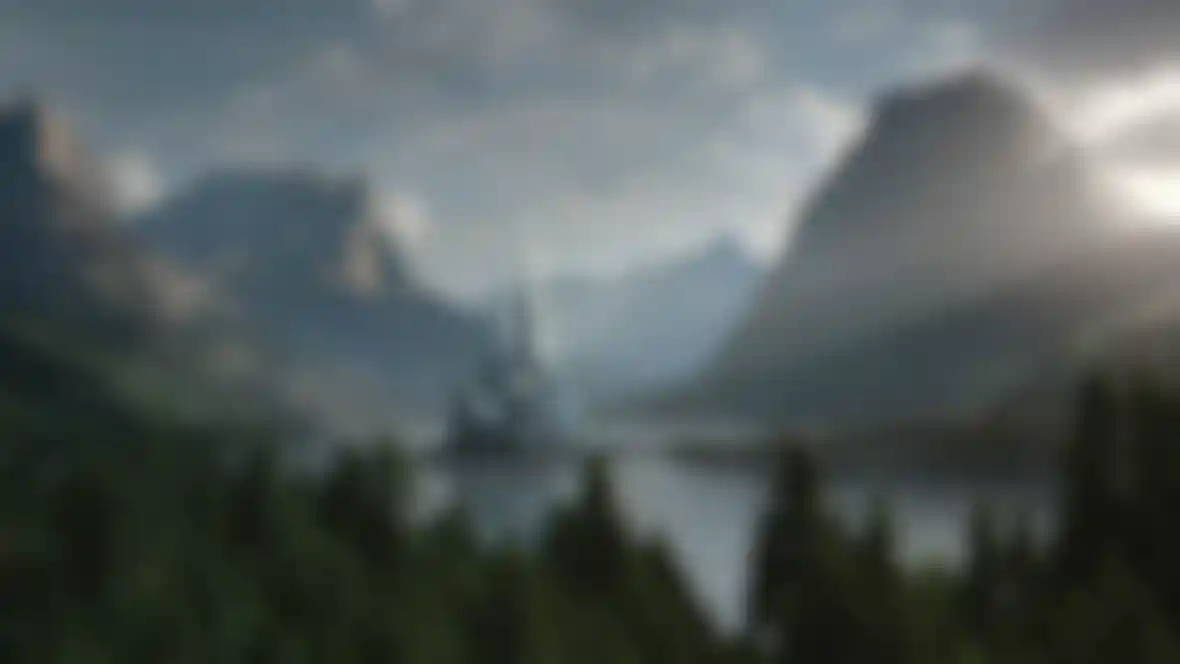
Chronicles of Narnia: The Lion, the Witch and the Wardrobe Approximately 150 shots in Narnia use Maxon Cinema 4D camera mapping.
Ivo Horvat explains, "Traditionally, matte painting was very limited in that matte painters would paint a static image on glass or masonry. The most movement one could attain was moving the camera that was filming the composite of the live action characters and the flat painting. Today, however, when we paint what is effectively a flat painting in the computer, we can project it onto geometry that matches form and proportion to the painting, and make it move so that it feels completely three-dimensional."
Horvat continues, "The initial creative steps of matte painting are all about capturing the narrative points that the shot is to convey. This usually involves doing quick sketches or mockups that flush out all of the necessary beats of the shot: mood, quality of light, composition, color palette as well as location of key geographical elements, if any. These get submitted to the director for approval and comments." Horvat emphasizes that "The skill of a matte artist is not simply to attain photorealism. That is just the prerequisite. This is, after all, cinema and a shot must convey an emotional beat, whether it's a close-up of an actor's face or a matte painting."

Horvat's work on The Chronicles of Narnia: The Lion, The Witch, and The Wardrobe made extensive use of the camera mapping feature in Maxon's CINEMA 4D.
Approximately 150 shots in Narnia use CINEMA 4D camera mapping. "The London bombing sequence has a variety of different applications of this technique," Horvat says. "There are several dozen shots that track the planes as they descend upon London. All the environments behind the planes are camera-mapped matte paintings. Therefore, in some cases you're looking down upon London; in other cases you're looking out a window while the camera tracks around the cockpit. The camera looks down through the cockpit glass and then out toward the horizon. You see 300 degrees of environment, all of which is camera mapped. The camera stays with the planes, also sliding over the ground at 500mph, and that movement is built in as well."


Other portions of the London bombing sequence also use camera mapping. One particularly complex setup involves a shot where the camera flies over the Pevensie family's house. Horvat says, "We see them leave the house and run to the shelter in their backyard."
The backyard was a real-life set, as was the wall with the door in it through which the family exits. "The neighborhood, the roofs, surrounding houses, and even some fence sections were all done using CINEMA 4D's camera mapping technology."


In addition to the bombing sequence, Horvat worked on the Paddington train station sequence. "In the case of the Paddington train station interior, I painted the entire interior with exception of the foreground staircase that the actors walk on," Horvat explains. "I painted the trains as well and we did a simple 2-D animation on them to give them life."
All of Horvat's matte shots for Narnia were rendered in CINEMA 4D. Horvat points out that at Sony and CINEMA 4D use the same render farm that RenderMan uses. "The beauty of the system is that it's very scalable. So if I have a high priority shot that needs to be rendered immediately, I can get 120 processors and it's done. If it's something less complicated I might not need that many; I might need 10 or 20."